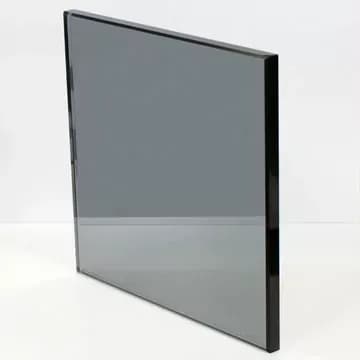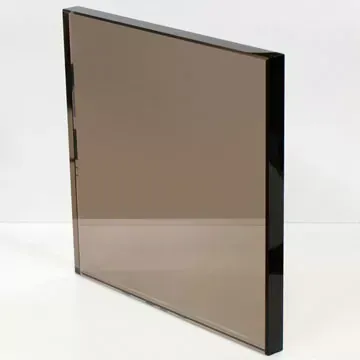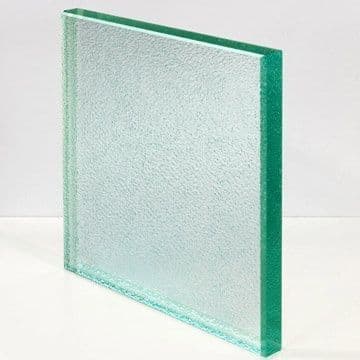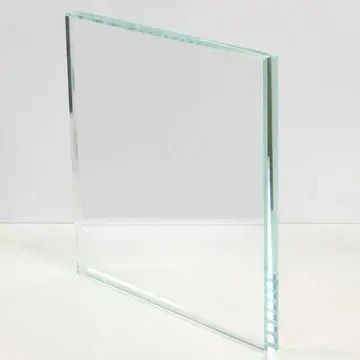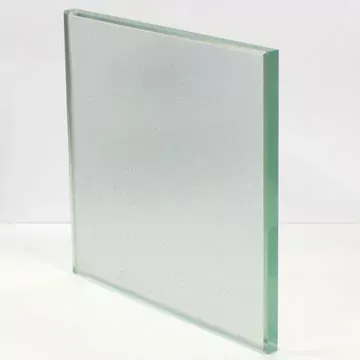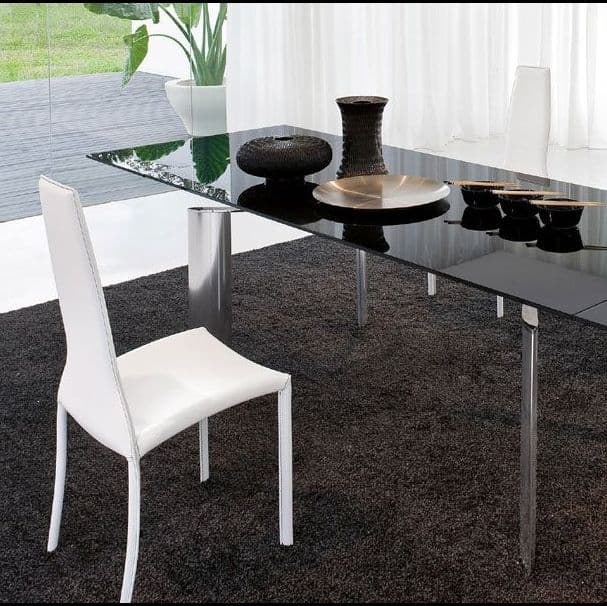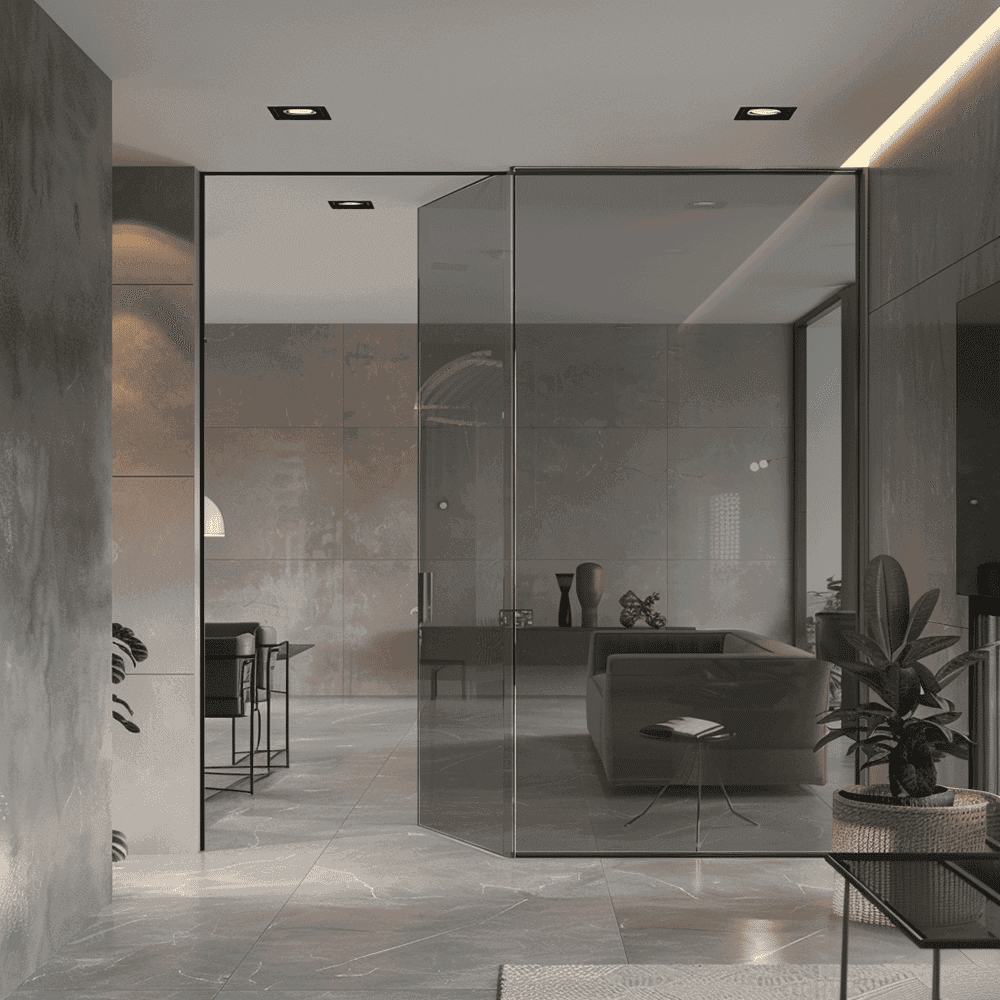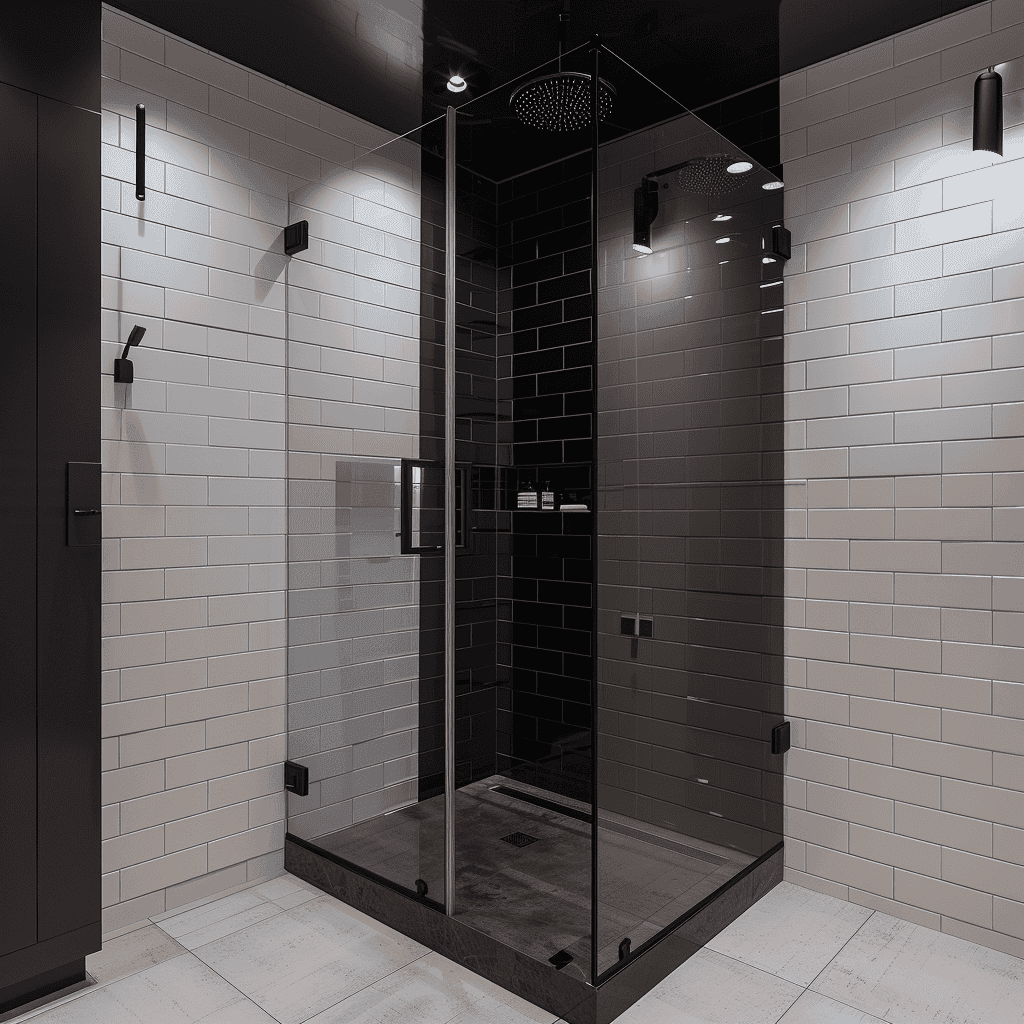Check Order Status
For immediate assistance, please call 1-866-452-7707
Gray Glass


Gray Glass
Gray glass offers a versatile solution for various architectural and modern design needs, whether the objective is neutral aesthetic, enhanced privacy, or advanced solar control. Its distinctive almost-black appearance not only harmonizes seamlessly with both exterior and interior environments but also serves as an effective tool for reducing solar heat gain and controlling glare. Gray glass is ideal for commercial and architectural applications such as windows, bathroom doors, shower enclosures, storefronts, atria, skylights, and glazing projects.
Customizable Options for Gray Glass
It’s quite simple. Choose a shape, enter your measurements, select your favorite glass tint, thickness, strength, edge style, etc., and check out your custom-designed gray glass.


What is gray glass?
Gray glass is a special type that gets its dark gray color and low reflectivity by adding cobalt oxide during manufacturing. This unique composition gives it a subtle grayish tint, making it suitable for both classic and modern designs. Once tempered, gray glass becomes more durable making it a favored choice for diverse applications in homes, offices, commercial settings, and various other contexts. Its ability to balance privacy and natural light makes it versatile, contributing not only to the overall design but also to improving solar control for a more comfortable and visually appealing space.
What are the benefits of gray glass?
Gray glass stands out as a suitable option for a wide array of applications. Its subtle color and modern look make it easy to pair with different exterior materials like stone, tile, steel, or metal plate, adding a nice touch to your surroundings. It also helps reduce glare which brings comfort and aesthetics to any living or working space. Whether sprucing up your home or adding a modern touch to commercial projects, gray glass offers practical and aesthetic benefits across various applications.
What are the disadvantages of gray glass?
While this glass type has its perks, like reducing glare and controlling heat, it also brings some downsides and limitations, making them something to think twice about, especially in certain situations.

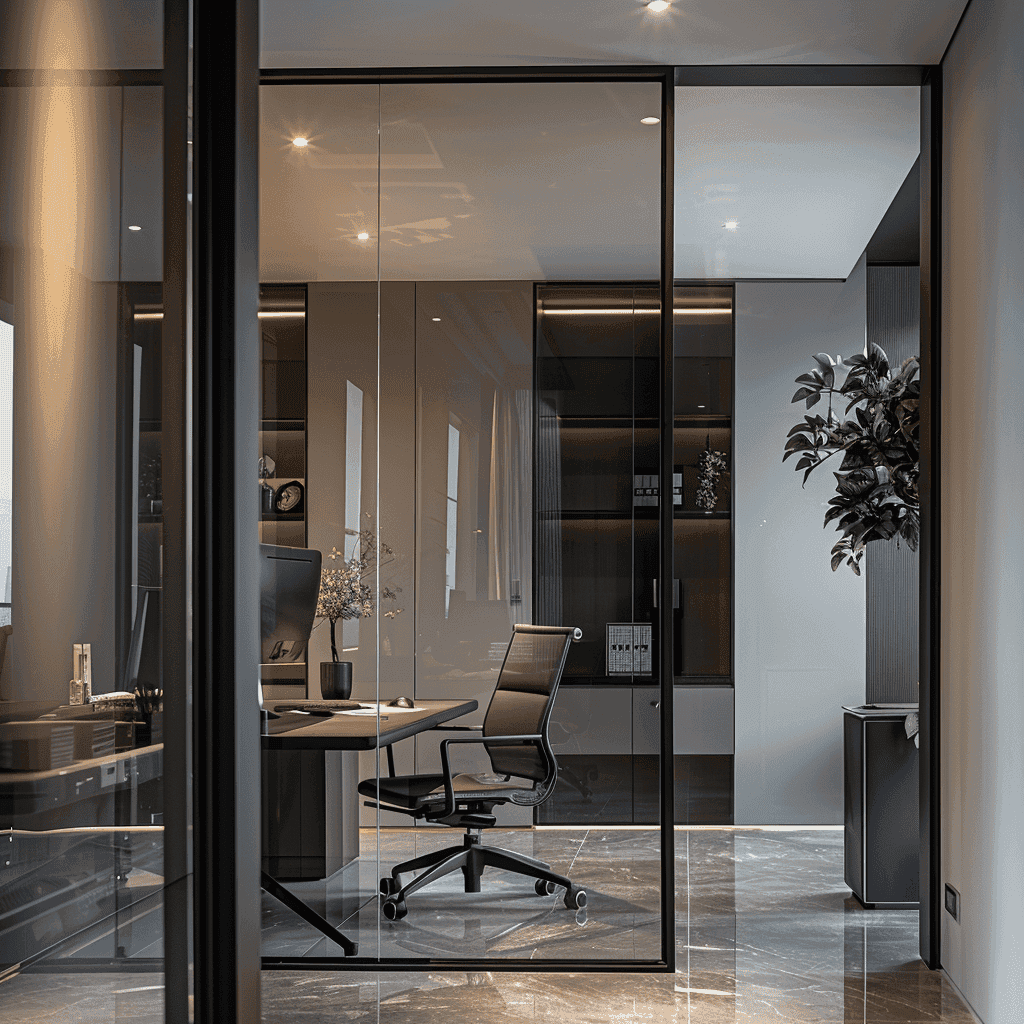
What is gray glass used for?
Tinted gray glass serves as a versatile and stylish solution that finds its application in various spaces. Widely used for bathroom showers for its modern aesthetic, it extends its use beyond — it's an excellent choice for partitions in commercial spaces, offices, large facilities, curtain walls, and glass glazing for buildings. Its adaptability shines through in storefronts, where it enhances aesthetics while providing privacy. Gray glass is also favored for Atria and skylights, offering solar protection and a sophisticated appearance. Even within interior design, this type of glass is widely used for its ability to add a touch of elegance to any space, ensuring both form and function are seamlessly integrated.

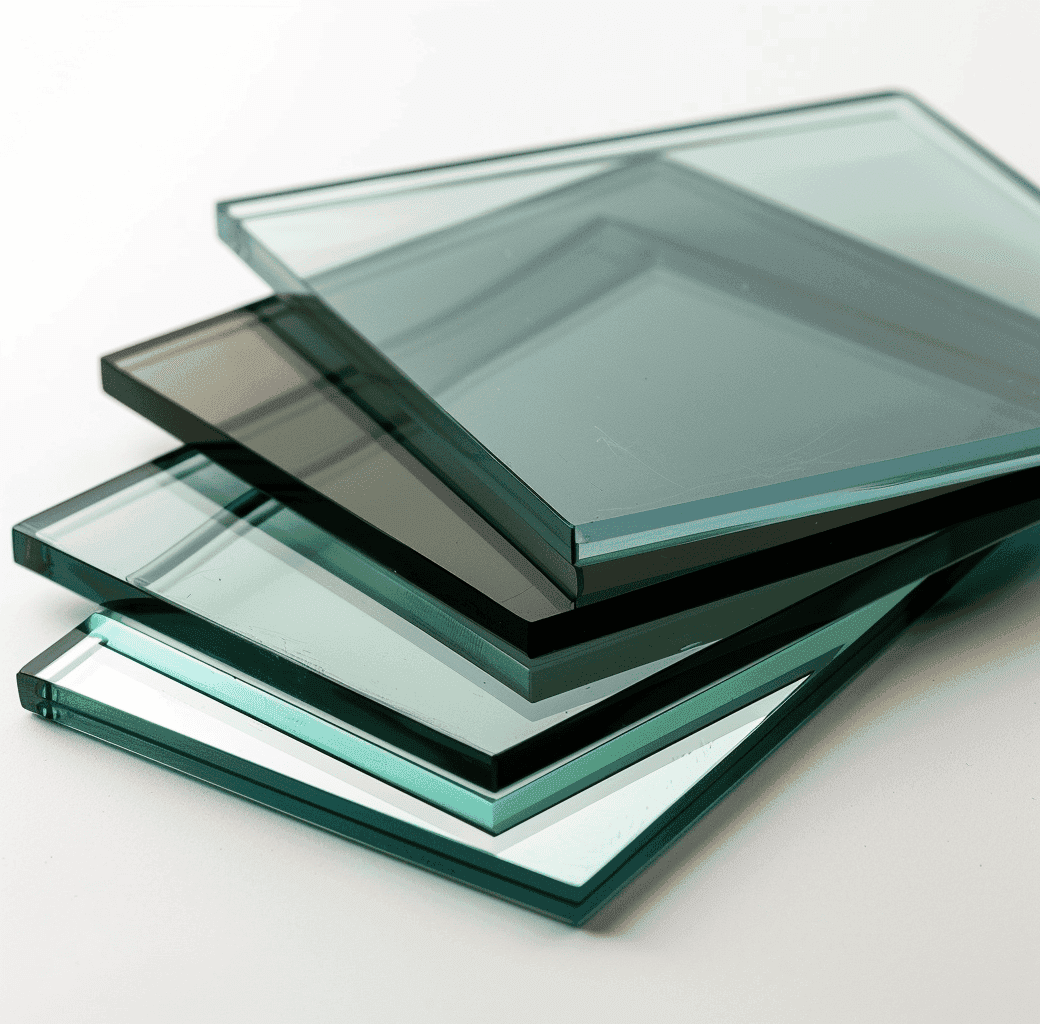
What is the difference between tinted and clear glass?
Clear glass allows ample natural light to brighten your home, creating a luminous and spacious feel. It offers clarity making it suitable for applications that require unobstructed view and transparency. In contrast, tinted glass significantly reduces light transmission and glare, which can lend a more subdued ambiance to interior spaces. While clear glass provides an unobstructed view, tinted glass adds a layer of translucency, offering a degree of privacy while still allowing some light to filter through. Learn more about clear glass in our detailed blog.

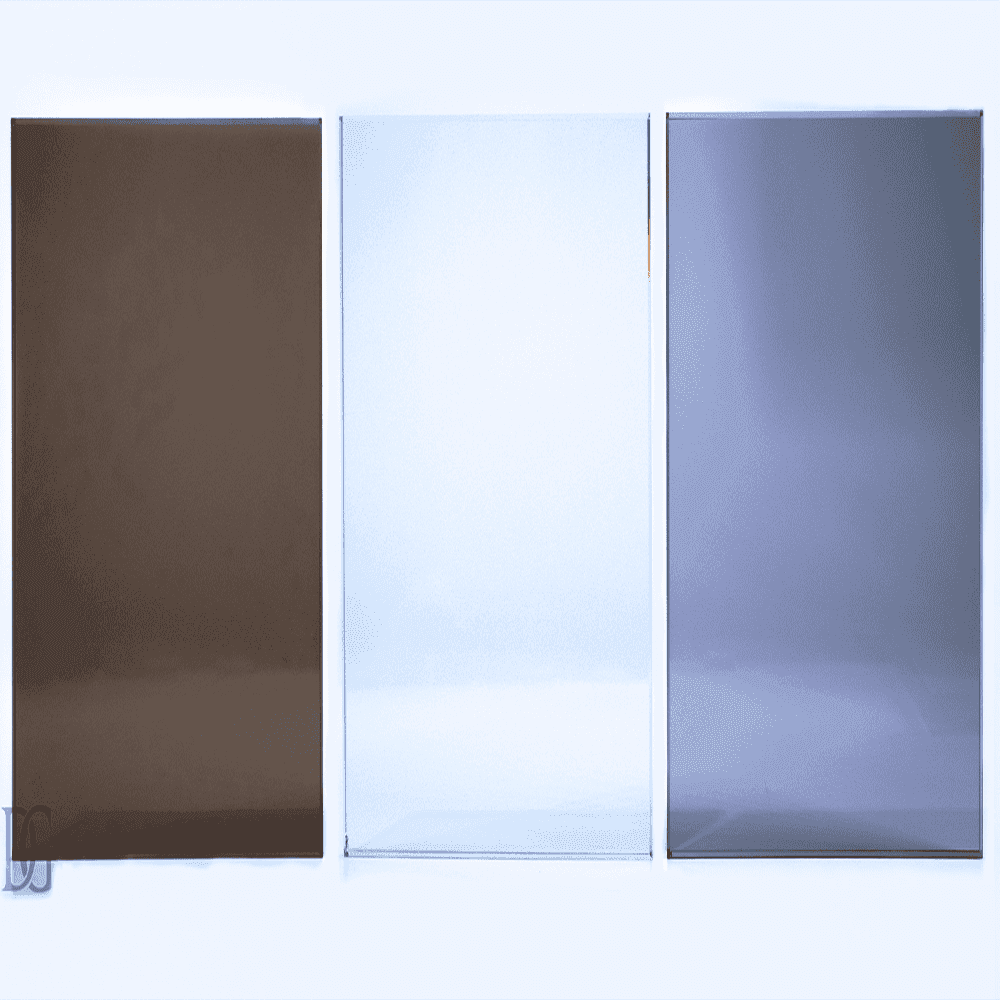
What is the difference between laminated glass and gray glass?
The primary distinction between these 2 glass types lies in their composition and behavior upon breakage. Tinted glass undergoes a float process with added cobalt oxide, resulting in a variety of colors such as bronze, blue, green, or gray. On the other hand, laminated glass features an interlayer of PVB (Polyvinyl Butyral) or EVA (Polyethylene Acetate), creating a sandwich-like structure with two glass panes. While laminated glass may crack under high pressure, the shards remain adhered to the plastic interlayer, providing a degree of structural integrity even when shattered. Unlike laminated glass, normal gray glass shatters into sharp shards upon breakage. Gray glass is easy to maintain and clean, while laminated glass may require extra care due to its susceptibility to scratches.

What is the difference between gray glass and reflective glass?
Reflective glass is transparent on one side, offering a clear view while shielding the interior from external UV rays. This glass variant is annealed and features a metallic coating that reflects light externally, optimizing natural lighting on sunny days and reflecting external heat. Not only does this enhance energy efficiency by allowing more natural light in but also contributes to temperature control. On the other hand, while gray glass is effective in blocking sunlight during summer, it is less transparent and darkens the interior view. This leads to colder interiors in winter by reducing natural heat. The choice between reflective and gray glass ultimately depends on whether one prioritizes an energy-efficient material with a clear view or a suitable solution for privacy.


What is the use of gray glass in buildings?
Gray glass in building construction serves a dual purpose — offering a sleek, modern aesthetic and effective solar control. It effortlessly blends with exterior design while controlling solar heat and glare, making it perfect for spaces needing a balance of aesthetics and practicality. It also provides a practical solution for adding privacy without compromising natural light, striking a harmonious balance between openness and seclusion. By minimizing heat gain, this type of glass helps reduce air conditioning costs, promoting both economic and environmental benefits. Gray glass also acts as a protective barrier against harmful UV radiation, promoting the well-being of occupants by mitigating potential health risks associated with prolonged exposure to ultraviolet rays.

Help & Installation Videos
Not sure where to start? We’ve put together a series of helpful videos for you.

More Helpful Tips
From how to clean table tops to unique DIY projects for tables with glass tops. We have a collection of helpful tips for you!

Need Expert Help?
Buy in Bulk
Become a Dulles Glass PRO

Gray Glass FAQs
Despite its almost black appearance, this glass color allows light to pass through making it suitable for applications where you want to add privacy into a space while retaining the ability for natural light to filter through. Distinguished by its translucency, allowing a portion of the light to penetrate while simultaneously scattering and diffusing it, leading to less distinct visibility of objects on the other side. The degree of translucency varies depending on the intensity of the gray tint applied to the glass. Lighter gray tints allow for more distinct visibility of objects compared to darker tints.
Yes, smoked glass is commonly referred to as gray soda-lime glass. This glass type is specially designed to limit or diminish light transmittance. It serves both functional and decorative purposes. The gray hue in smoked glass arises from the tinting process, which involves adding substances to the glass to reduce the amount of light that passes through it. Therefore, when people use the term "smoked glass," they are often referring to gray glass.
Yes, tinted glass can be tempered. It is not only available in its raw glass form but can also undergo a tempering process. Tempering involves heating the glass to high temperatures and then rapidly cooling it to enhance its strength and durability. This process makes the glass suitable for various industrial and commercial applications where strength and safety are crucial. It's important to note that the tempering process can only be done by a professional or a legitimate glass supplier/fabricator.
Placing an order for your customized glass is an easy process. Simply visit our glass customizer, where you can easily navigate through the options. Choose the desired cut, input your specific measurements, and proceed to make selections for the glass edge, and corner work, as well as the preferred glass thickness. The user-friendly interface ensures a seamless ordering experience, allowing you to customize the glass to your required specifications with just a few simple clicks.
The turnaround time for shipping at Dulles Glass varies depending on the items purchased and the specific delivery methods available. For in-stock products, the delivery typically takes place within 1 business day. However, custom products are shipped within 1-3 business days.
Certainly! Our team at Dulles Glass is dedicated to assisting in the customization process. Whether you have technical or design-related questions, feel free to reach out to us through live video chat, email (info@dullesglass.com), or by calling us at (866) 452-7707. We're here to ensure a smooth and tailored experience for your new glass purchase.

Customization At Its Best
Whether your project is just getting started or needs help to find the final touch, our glass and design experts are here to help you make your dreams come true.

Fast & Free Shipping
Nationwide free shipping on your entire order, delivered within 3 - 7 days. Guaranteed to arrive in one piece!

Expert Customer Service
Our friendly team is here for you 7 days a week. Call, email, text or live chat with us.

Best Deals & Rewards
Prices that fit your budget and amazing deals and rewards to maximize your savings.
Our customers say
Excellent
4.9 out of 5 stars
Dulles Glass
Company
Support

Learn more about our:
Price Match Guarantee
United States © 2025 Dulles Glass. All Rights Reserved.




















